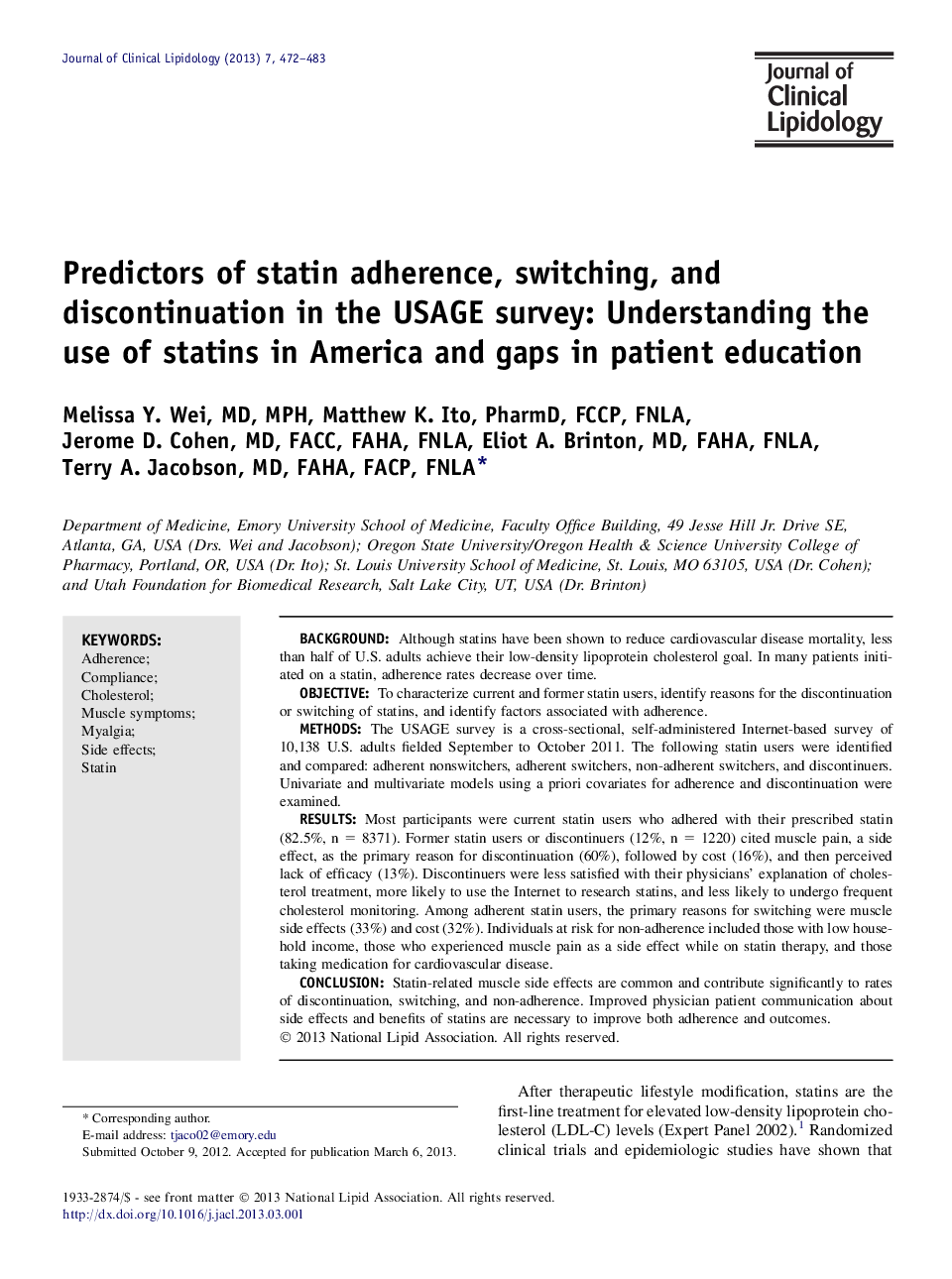| Article ID | Journal | Published Year | Pages | File Type |
|---|---|---|---|---|
| 5986089 | Journal of Clinical Lipidology | 2013 | 12 Pages |
BackgroundAlthough statins have been shown to reduce cardiovascular disease mortality, less than half of U.S. adults achieve their low-density lipoprotein cholesterol goal. In many patients initiated on a statin, adherence rates decrease over time.ObjectiveTo characterize current and former statin users, identify reasons for the discontinuation or switching of statins, and identify factors associated with adherence.MethodsThe USAGE survey is a cross-sectional, self-administered Internet-based survey of 10,138 U.S. adults fielded September to October 2011. The following statin users were identified and compared: adherent nonswitchers, adherent switchers, non-adherent switchers, and discontinuers. Univariate and multivariate models using a priori covariates for adherence and discontinuation were examined.ResultsMost participants were current statin users who adhered with their prescribed statin (82.5%, n = 8371). Former statin users or discontinuers (12%, n = 1220) cited muscle pain, a side effect, as the primary reason for discontinuation (60%), followed by cost (16%), and then perceived lack of efficacy (13%). Discontinuers were less satisfied with their physicians' explanation of cholesterol treatment, more likely to use the Internet to research statins, and less likely to undergo frequent cholesterol monitoring. Among adherent statin users, the primary reasons for switching were muscle side effects (33%) and cost (32%). Individuals at risk for non-adherence included those with low household income, those who experienced muscle pain as a side effect while on statin therapy, and those taking medication for cardiovascular disease.ConclusionStatin-related muscle side effects are common and contribute significantly to rates of discontinuation, switching, and non-adherence. Improved physician patient communication about side effects and benefits of statins are necessary to improve both adherence and outcomes.
